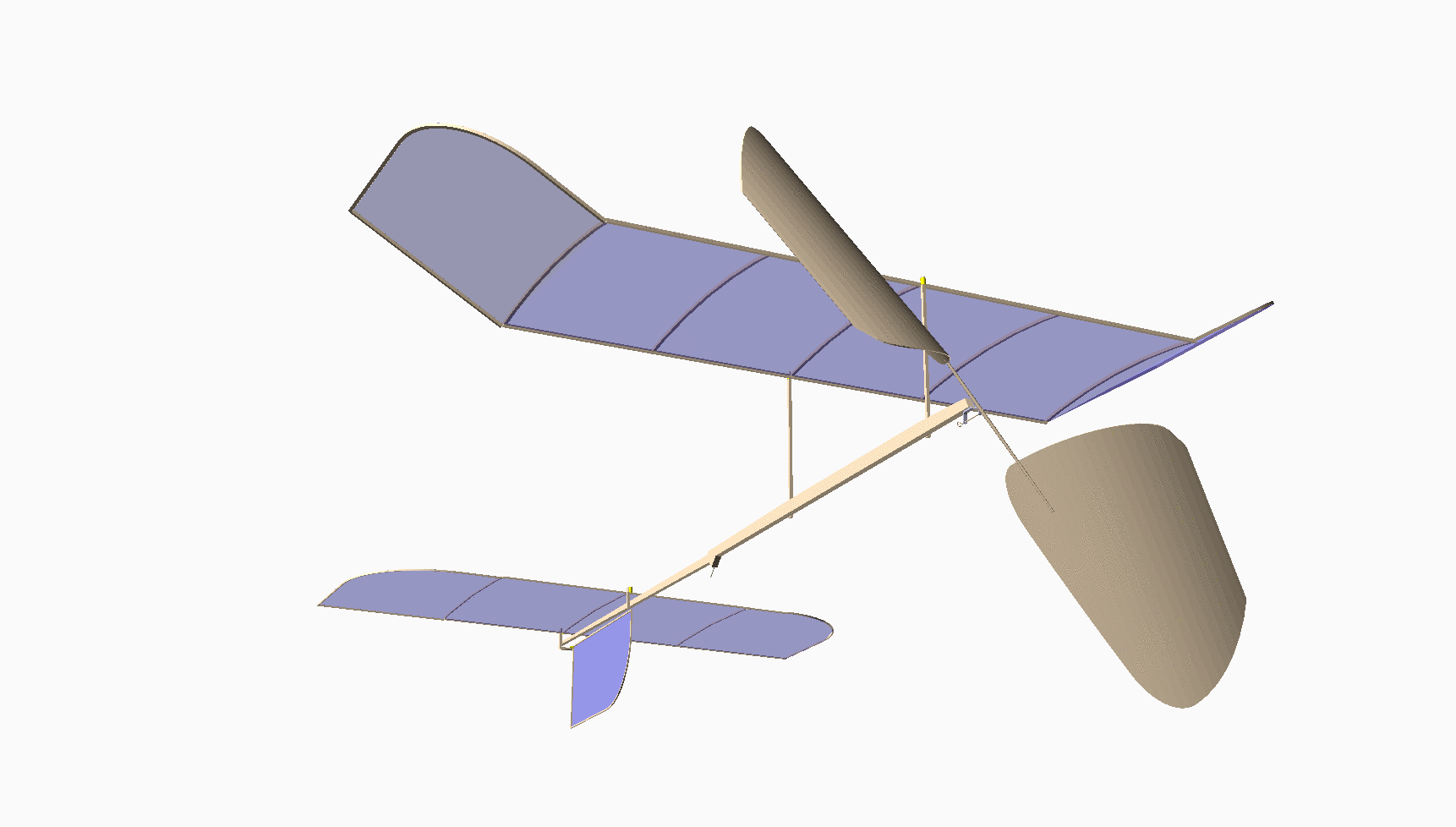Introduction¶
After retiring from my career as an aeronautical engineer and computer scientist, I returned to a hobby I started back in high school: building and flying indoor model airplanes. These models fly in closed rooms, some as small as a gymnasium, and some as large as blimp hangers. They are powered by rubber strips tied into a loop and wound up with many turns to produce power for a propeller. That propeller pulls an extremely light airframe typically covered with a very thin Mylar sheet to produce an airplane weighing less than a U.S. Penny! Flight times have reached as high as an hour so far, although my efforts have been much poorer. I once hit 15 minutes in my youth at the Lakehurst Blimp Hanger, under some expert guidance.
Part of my motivation for getting into this kind of model building was the simple fact that the models were extremely cheap - important to the teen-age me. The other motivation was that I was on a quest to figure out how these airplanes managed to fly. That quest started when I first saw a free-flight model airplane at the age of nine! What I did not really know then was that I had started on the path to becoming an aeronautical engineer. However, my career path took an unexpected turn when I found myself out of graduate school and working as a research scientist at the USAF Aerospace Research Laboratory at Wright-Patterson AFB in Dayton, Ohio. There, my work got me started in writing code for first-generation supercomputers, and I began a second career as a computer scientist. Eventually, I went back to graduate school and got a second Master’s degree in CS!
After 20 years in the USAF, and another 17 teaching computer science at Austin Community College, I found myself retired with the time it takes to build models again, and do some serious research into how they fly. That was the inspiration for the Math Magic project, and this book is the documentation for the research part of that project.
What follows is a chronicle of my work. Part of that work involves building some test equipment to get my own data on how my models work, and part will be a more theoretical exploration of that flight domain using some computational fluid dynamics software. Hopefully, all of this will prove useful to other buiders who share my fascination with indoor free-flight models.
The rubber motor on these models is the only source of energy. When fully wound up, it produces a torque force that drives the propeller, and it also exerts a strain on the airframe, since the motor will be in tension. One end is connected to a hook on the propeller shaft, and the other to a hook at the rear of a “motor stick” that is part of the body of the model. If the tension is too great, the model can collapse. If the torque is too high, the model might climb up to the ceiling and bang into that causing many flight problems.
Obviously, builders need to learn how to match the motor to the model and the flying site to succeed at this kind of activity. Serious builders use sensitive torque meters to measure the power that will go to the propeller, and rubber stripping equipment to cut thin rubber strips to suit their needs. Learning how to build light-weight models strong enough to handle all of this is key to this kind of model building.
The engineer in me wants to do some experiments, then create some computer software to help assess a design before it even gets built. Long ago, I conducted research in the then emerging field of Computational Fluid Dynamics which used powerful supercomputers to simulate the flow of air over complete aircraft, usually those flying at very high speeds. That kind of work is not commonly done for vehicles like my indoor models, but we can still do some research that might help.
For my first attempt at making some kind of contribution to the model building world, I decided to do some research into rubber motors and propellers. What I wanted was a way to gather data in a fully automated way, rather than rely on manual measurements from torque meters. The problem was figuring out what kind of equipment I could use for this work.
